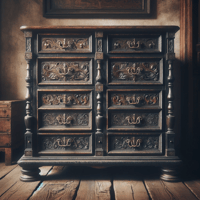Moving to a new house with a walk-in closet is an exciting venture, especially for those who love...
9 Easy Steps to Organize a Junk Drawer
9 Steps to Organize a Junk Drawer
A junk drawer is one of our most and least favorite places. I think we all have a love-hate relationship with it. It’s a quick and convenient destination to drop whatever we have in our pockets or when our hands are full, though it fills up quickly with unnecessary junk. I think it has a bad reputation because of its name. I guess “the place where I drop my stuff” is too long. There is treasure in almost everyone’s junk drawer. Here are some steps to organize yours and hopefully find some treasure. (You can read my earlier post about the treasure that I found in mine.)
Here are 9 steps to organize a junk drawer:
- Empty the entire contents of the drawer onto a clean, flat surface. A counter is usually best.
- Sort items into categories, such as office supplies, batteries, phone cords, keys, credit or gift cards, personal care items, etc.
- Discard any items that are broken, expired, or no longer needed. The no longer needed items are the most difficult to discard. A tip is to sort them into 3 categories: those that are no longer needed, those that might have a need, and those that you are just not sure if they have a purpose. Toss the first and keep the other two. The other two should be put in a ziploc type bag until later.
- Clean the drawer thoroughly with a damp cloth. No cleaning agents are needed unless you find an identified (or unidentified) substance in which case you will need something stronger.
- Decide on the layout of the drawer and measure to determine what size and type of organizing products such as dividers, trays, or containers will be needed.
- Install organizing products in the drawer to create designated spaces for each category of items. The key here is to make sure you do not have more stuff than space. If you do, the stuff in that category needs its own space. Batteries are a good example of this. If you have lots of batteries, buy a cheap battery tester and store them in a small clear bin.
- Return sorted items to the drawer and place them in their designated spaces. If you have some items that do not have a designated space, use a compartment in the organizer to make your catchall.
- Optional...If you really want to turbo the project, use labels to identify the contents of each compartment.
- The only way to maintain the organized state of the drawer is by regularly putting things back in their proper place. If you find that you miscategorized, it’s easy to redo and change the category.
A key tip is to keep the items used most often in the front and easy to reach, and the items that are used less often in the back. It is important to maintain it and periodically review the items in the drawer. Be sure to remove any items that are no longer needed and reposition those that are more popular. And one last thing...if you follow these steps, in my professional opinion, it should now be called a Joy Drawer!


